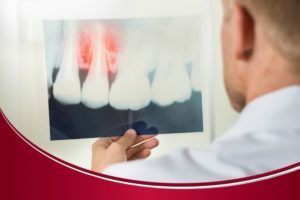 Root canals of the tooth are difficult to access and complex. With canal disease, severe pain can occur against the background of inflammation of the internal contents of the tooth - pulp.
Root canals of the tooth are difficult to access and complex. With canal disease, severe pain can occur against the background of inflammation of the internal contents of the tooth - pulp.
In this case, urgent endodontic treatment is required, during which all necessary manipulations will be performed to save the tooth and restore its basic functions.
Contents of
- What are the root canals of the
- How many channels are there in the tooth?
- What threatens the root canals
- Sequence of actions in the treatment of
- channels Possible complications after endodontic treatment
- What can the reluctance to treat teeth
- avoid How to avoid such problems
- Oral hygiene - it is worth starting
What are the root canals
Each tooth, regardless ofits shape and purpose, has three main parts: crown, neck, root. Roots play the role of a restraint system, and the more the load on the tooth, the more reliable this system should be.
Teeth have different number of roots:
- incisors and canines -1;
- premolars( small molars) - 1-2;
- molars( large molars) - 3-4;
- wisdom teeth - up to 5.
Inside the root there is a cavity that consists of a pulp chamber and a root canal. Venous and arterial vessels and nerve fibers pass through the channels to the chamber. The pulp fills the entire cavity.
How many channels are there in the tooth?
The number of channels does not necessarily match the number of roots in the tooth. In one root, two channels can pass in parallel. Most often this refers to canine teeth.
Two channels can have lower central incisors. Channels can bifurcate at the ends - at the pulp chamber or at the apex of the root( apex).In the latter case, the root will have two apices with apical orifices, through which the vessels fit nerves.
Channels are not always straight. Very often they are curved and have a very small lumen, which can cause difficulties when the canal is sealed.
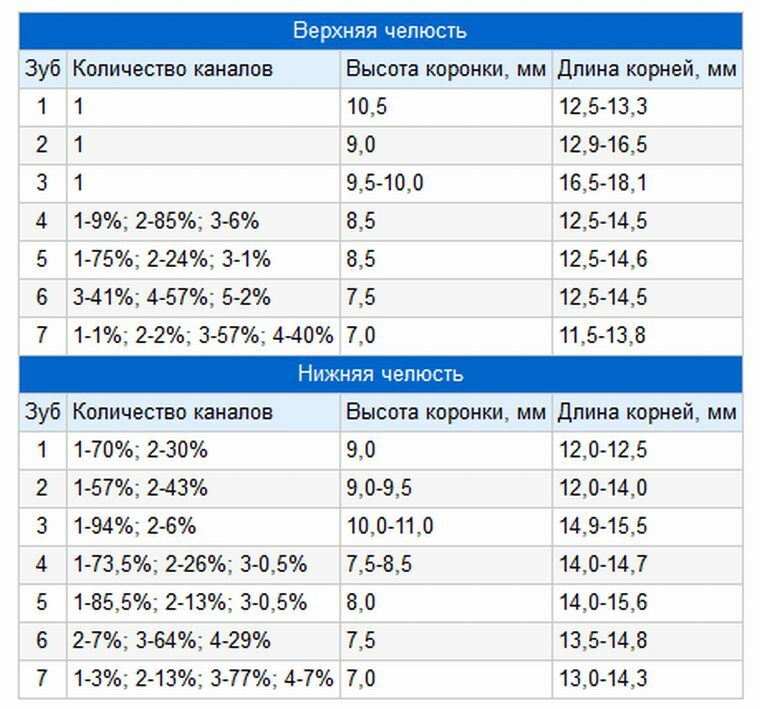
The number of channels is shown in the photo depending on the specific tooth - the percentage probability
What threatens the root canals
To the damage of the root can lead to such diseases as deep caries, pulpitis and periodontitis. Caries is the most common oral disease, which affects hard tissues of the teeth. The formation of a carious cavity on the tooth can lead to complications and deeper tooth damage.
Infection can penetrate the pulp and lead to inflammation or death. Pulpitis is a serious disease requiring timely treatment. In the inflamed pulp begins the process of rapid destruction of blood vessels and nerve fibers, an abscess may occur.
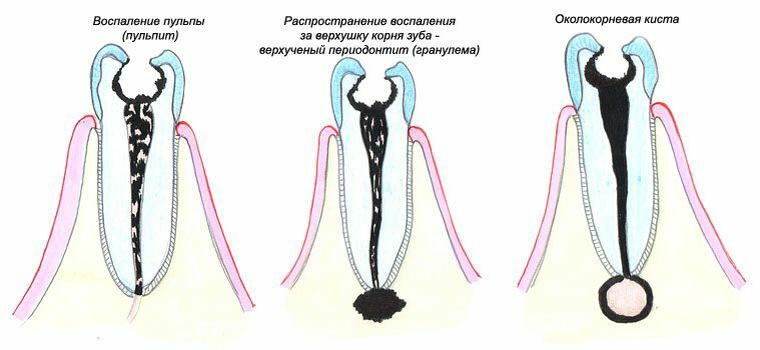
Pulpitis sometimes occurs as a result of a tooth injury. Partial or complete destruction of the tooth as a result of impact or fall can lead to the exposure of the pulp.
Infection can occur if, during the treatment of the tooth, the carious cavity is inaccurately prepared and the pulp will be injured by the instrument. Microorganisms arising on infected with deep caries tissues fall from the instrument onto the pulp, which leads to its inflammation.
Complications of pulpitis can lead to inflammation of the tissues surrounding the tooth and are under it. This disease is called periodontitis.
Symptoms that occur with acute pulpitis may include toothache or swelling of the adjacent gingiva. The pain may not be constant, but appear when getting on a tooth hot or cold.
Pain sensations that occur when the tooth is pressed suggest the development of periodontitis.
Sequence of actions in the treatment of
channels With inflammation or death of pulp, endodontic treatment of the tooth canals is necessary. 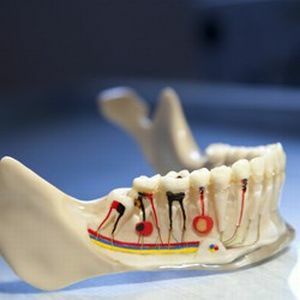
Endodontics - a section of dentistry, which includes the diagnosis and treatment of pulp and periodontal disease in the occurrence of pathological changes in them, root canal therapy.
The goal of treating canals is to return the tooth to physiological and anatomical functions. For this, during the endodontic treatment it is necessary to do the following:
- clean the internal cavity of the tooth from infection;
- remove the dead or inflamed part of the pulp;
- clean the pulp chamber and channels;
- to expand and disinfect channels;
- to seal the channel( to seal all branching channels in the root).
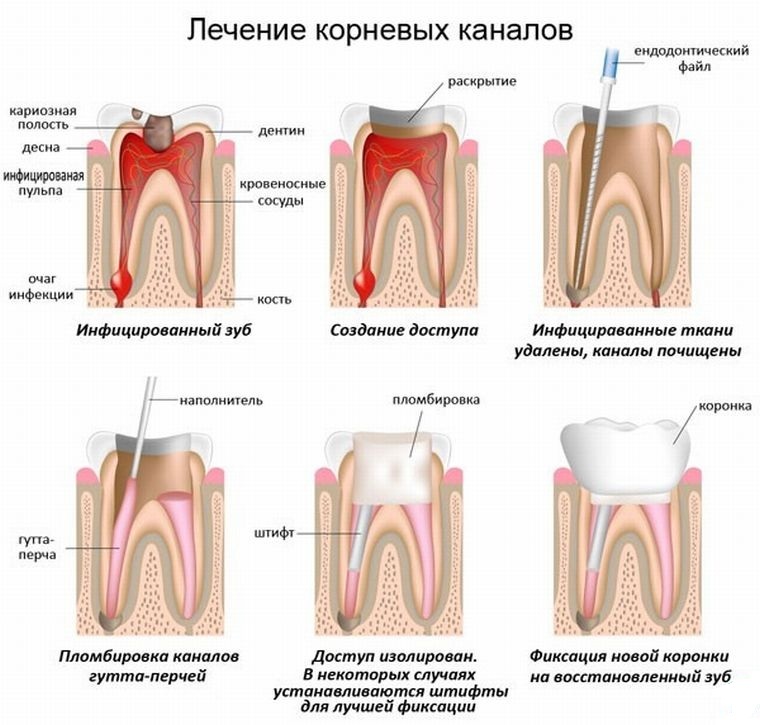
Root canal treatment includes the following steps:
- Conducting clinical diagnosis of .The doctor examines the tooth visually and, if necessary, takes an X-ray. Radiographic examination is necessary to establish the shape and length of the canal. With significant inflammatory lesions or in case of complications after previous treatment, the doctor may prescribe a CT scan.
- Anesthesia with local anesthetic .
- Installation, if necessary, of a cofferdam - a special latex plate for the isolation of a sick tooth.
- Opening of the pulp chamber .
- Removal of the inflamed pulp from the chamber and channels.
- Cleaning, extension and formation of the root canal .This is done mechanically and chemically.
- Treatment of the cavity with antiseptic and bactericidal preparations .Sealing of the channel. This is necessary to prevent the development of bacteria in the canal. Usually, gutta-percha( rubber resin) is used for filling.
How the hybrid root canal obstruction:
Possible complications after endodontic treatment of
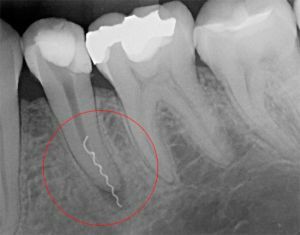 If the pain does not disappear or worsen for a long time after treatment, it is necessary to contact the dentist again.
If the pain does not disappear or worsen for a long time after treatment, it is necessary to contact the dentist again.
There may have been some errors in the treatment or complications.
If the tooth is unbearably painful after the treatment of the canals, then there is a place to be:
- the tip of the tool tip;
- insufficient or poor-quality filling of the canal with filling paste;
- tooth perforation;
- substandard work to expand the channel lumen.
Repeated manipulations for cleaning and disinfection of root canals may be necessary. One of the causes of complications may be an allergic reaction to used materials.
In this case, you will need to install another seal, which will not contain the components that cause allergy.
The seal can fall out if the cavity was improperly prepared or the doctor's recommendations were violated.
What can lead to reluctance to treat teeth
If the causes of the disease are not eliminated or the pathological processes in the tooth are not stopped, the health consequences can be very serious: 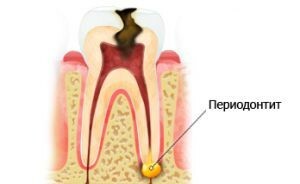
- Deep caries can cause lesions and infection of the pulp - pulpitis. There are painful sensations from cold or hot water, loads on the tooth.
- If pulpitis is not treated with , the infection can go into deeper layers and cause inflammation in the circumcircular tissues.
- The periodontitis is formed. The bone under the tooth may be damaged. There are pains with pressure on the tooth, the gum is swelling, the temperature rises. Without timely treatment, you can lose a tooth.
How to avoid such problems
Since the main reason for the need to treat the dental channels is caries, measures should be taken to prevent its development.
Improper nutrition, lack of vitamins and minerals in the body, non-compliance with hygiene contribute to tooth disease.
To avoid this, one should eat foods rich in proteins, amino acids, vitamins. Calcium and phosphorus are especially important for teeth.
It is worth reducing carbohydrate intake and not drinking too hot or cold drinks. In the diet must be sure to eat solid food.
Hygiene of the oral cavity - it is worth starting with
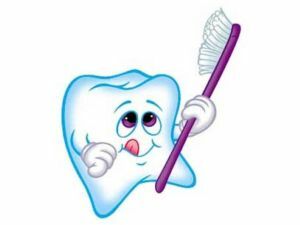 It is necessary to carefully observe the hygiene of the oral cavity. The toothbrush should be qualitative and anatomically adapted to effective tooth cleaning.
It is necessary to carefully observe the hygiene of the oral cavity. The toothbrush should be qualitative and anatomically adapted to effective tooth cleaning.
The brush should be thoroughly washed after use and dried vertically upwards with a bristle. This will prevent bacteria from developing on the bristles. It is recommended to change the brush once a month.
Care should be taken to select a toothpaste. There are several types of pastes:
- Hygienic paste only cleans and refreshes the oral cavity.
- therapeutic and prophylactic products can include biological additives, plant components, minerals, bio-salts. Such pastes prevent diseases of the oral cavity, reducing the effect of pathogenic microflora.
- Therapeutic paste is used according to the doctor's prescription. They have a positive effect on diseases of the teeth and oral mucosa, because they contain medicinal substances, a large number of useful components. Have disinfectant and anti-inflammatory effects. Help to stop the development of caries.
Disease of canals in most cases is the result of negligent attitude to the teeth. Neglect of hygienic procedures, neglected cases of tooth damage, unwillingness to visit a dentist - all this can lead to painful, painful damage to nerves and blood vessels inside the tooth, which requires expensive treatment.
In order not to bring your teeth to such a state, you should carefully monitor your health and keep your mouth clean, choosing the right care products.
